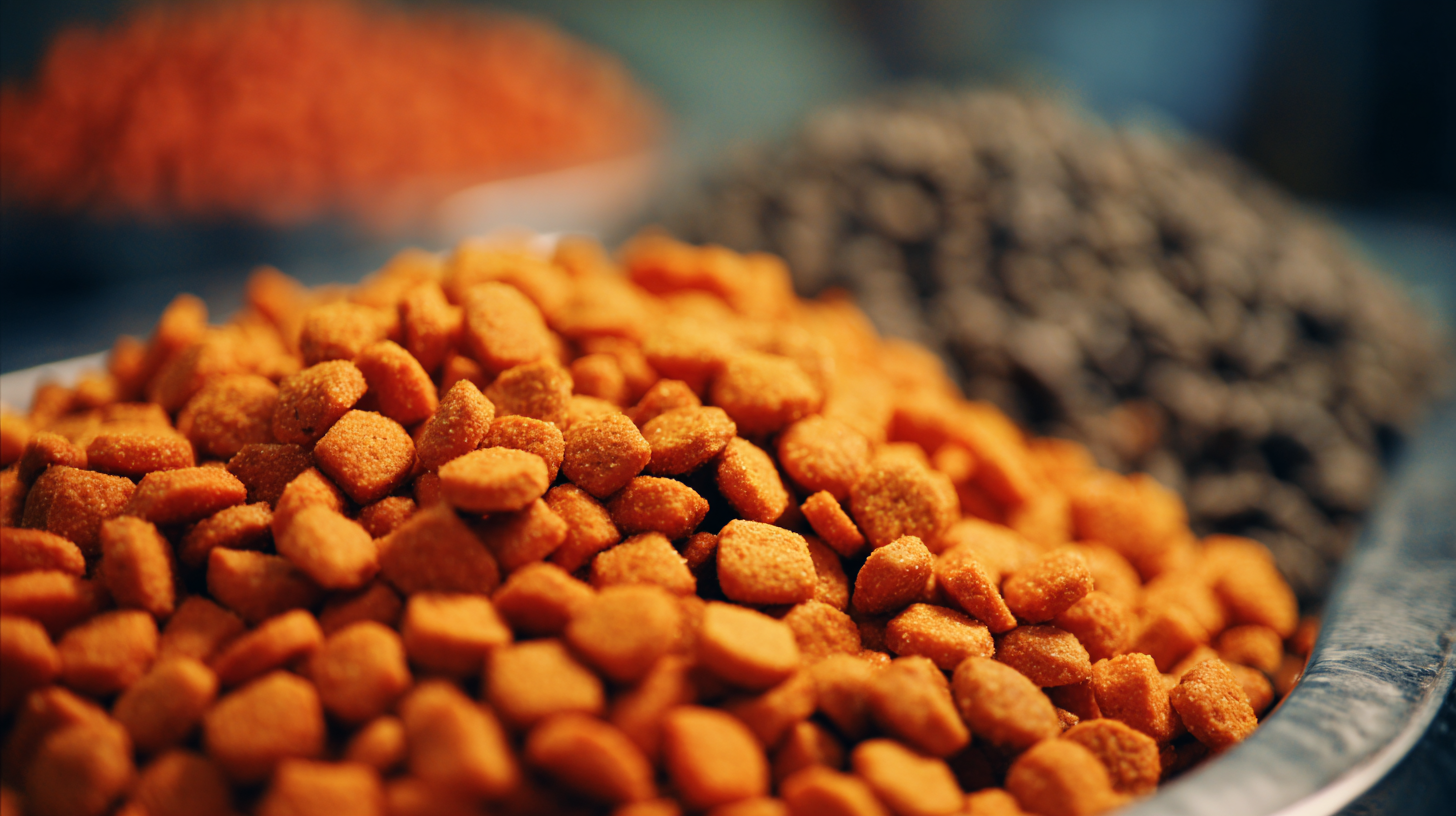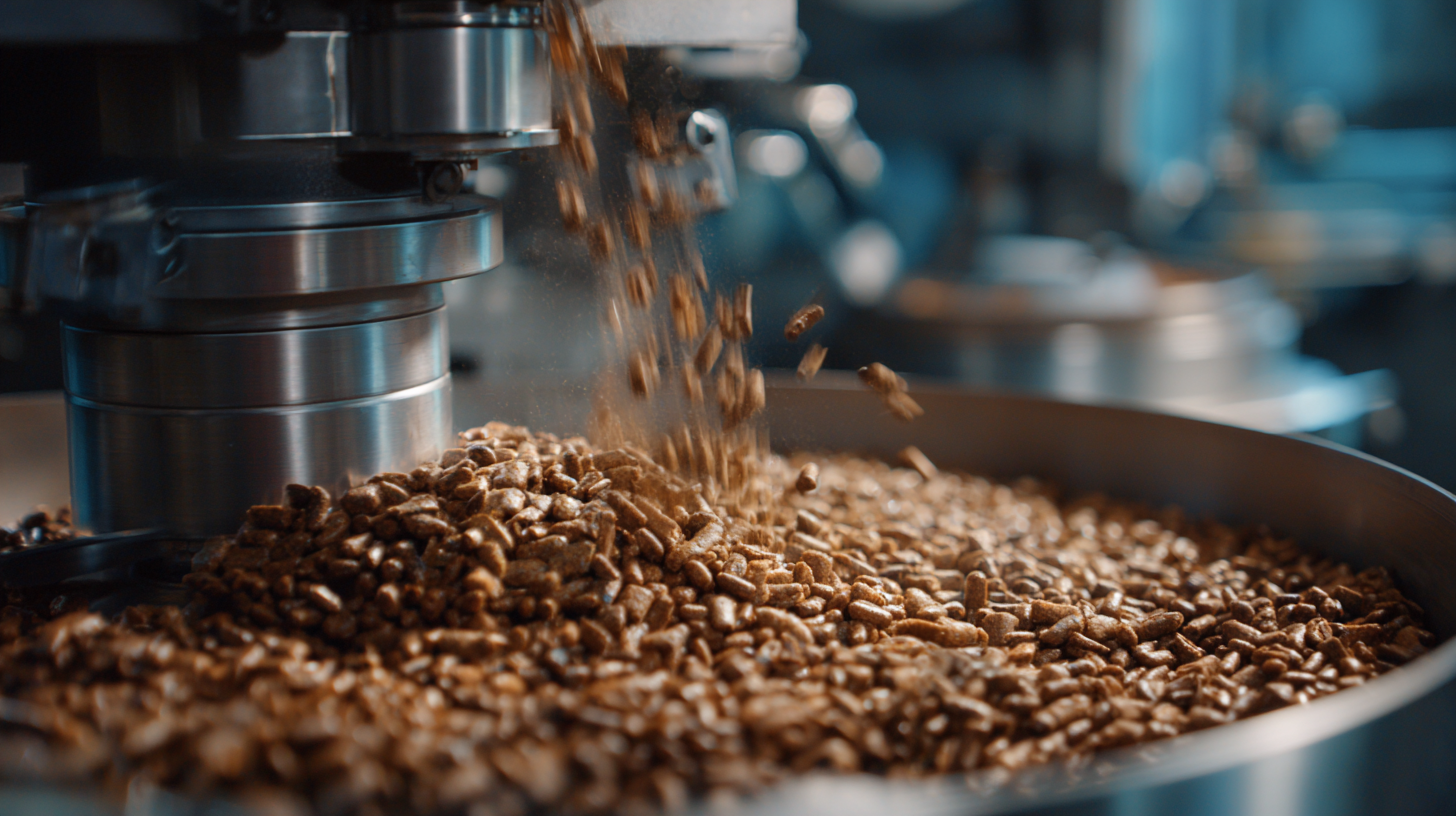

The evolution of pet food production has undergone remarkable transformations in recent years, driven by advancements in technology and an increasing awareness of pet nutrition among consumers. According to a report by the American Pet Products Association, the pet food industry reached an estimated value of $42 billion in the U.S. alone in 2022, reflecting a growing commitment to high-quality nutrition for pets.
 As innovations such as precision nutrition, AI-driven formulations, and sustainable sourcing emerge, they reshape how pet food is produced and tailored to meet the specific dietary needs of pets. Furthermore, a study by Market Research Future predicts a compound annual growth rate of 5.5% for the global pet food market between 2021 and 2028, indicating an ongoing shift towards more sophisticated and health-oriented offerings. This exploration into the integration of technology into pet food production highlights the pivotal role it plays in enhancing our pets' health and wellness, while also adapting to contemporary consumer demands.
As innovations such as precision nutrition, AI-driven formulations, and sustainable sourcing emerge, they reshape how pet food is produced and tailored to meet the specific dietary needs of pets. Furthermore, a study by Market Research Future predicts a compound annual growth rate of 5.5% for the global pet food market between 2021 and 2028, indicating an ongoing shift towards more sophisticated and health-oriented offerings. This exploration into the integration of technology into pet food production highlights the pivotal role it plays in enhancing our pets' health and wellness, while also adapting to contemporary consumer demands.
The historical development of pet food production techniques has undergone a remarkable transformation over the decades. Initially, pet owners primarily relied on table scraps and homemade concoctions to nourish their animals. This practice was predominant until the early 20th century, when the commercial pet food industry began to gain traction. In 1860, the first commercially produced pet food was created in the United States, primarily from meat byproducts, illustrating the early recognition of pets as valuable companions deserving of specialized diets.
As the years progressed, advancements in food technology led to significant changes in pet nutrition. The introduction of extrusion cooking in the mid-20th century revolutionized the way pet food was made, allowing for the production of kibbles that were both shelf-stable and nutritionally balanced. Alongside this innovation, the rise of nutritional science paved the way for more personalized pet diets, with a focus on specific health needs and life stages. Today, the pet food industry continues to evolve, incorporating high-quality ingredients and cutting-edge techniques, reflecting a growing understanding of pet health and wellbeing.
 Advancements in technology have significantly transformed the pet food industry, particularly in enhancing the nutritional quality of products for our furry companions. From ingredient sourcing to manufacturing processes, technology plays a pivotal role in ensuring that pet food meets the specific dietary needs of pets. Innovations such as precision nutrition, where diets are tailored to a pet’s age, breed, and health status, exemplify how data analytics and research are shaping pet nutrition. Computerized systems and AI-driven formulations allow manufacturers to create balanced diets that optimize health benefits, reflecting a deeper understanding of pet metabolism and nutritional requirements.
Advancements in technology have significantly transformed the pet food industry, particularly in enhancing the nutritional quality of products for our furry companions. From ingredient sourcing to manufacturing processes, technology plays a pivotal role in ensuring that pet food meets the specific dietary needs of pets. Innovations such as precision nutrition, where diets are tailored to a pet’s age, breed, and health status, exemplify how data analytics and research are shaping pet nutrition. Computerized systems and AI-driven formulations allow manufacturers to create balanced diets that optimize health benefits, reflecting a deeper understanding of pet metabolism and nutritional requirements.
Moreover, technology has revolutionized food safety and quality control in pet food production. Automated systems monitor production lines to detect contaminants, ensuring that the food is not only nutritious but also safe for consumption. Advanced packaging technologies have helped maintain the freshness and integrity of pet food, preserving vital nutrients and preventing spoilage. Additionally, the growing trend of using organic and natural ingredients is supported by technology that facilitates traceability, allowing pet owners to make informed choices about the food they provide to their pets. Overall, the integration of technology in pet food production is driving a new era of nutrition that prioritizes the health and well-being of pets.
The pet food industry has undergone significant transformation due to breakthroughs in scientific research. Advancements in nutrition science are helping pet food manufacturers develop formulations that cater to the specific dietary needs of pets at different life stages and with varying health conditions. Ingredients that were once considered secondary are now meticulously examined for their nutritional value and potential health benefits. For instance, the incorporation of novel proteins, probiotics, and omega fatty acids are tailored to enhance digestive health and overall wellbeing in pets.
Tip: When selecting pet food, look for products that list high-quality ingredients like real meat and wholesome grains at the top of the label. This ensures that your pets receive the essential nutrients they need.
Moreover, scientific research plays a pivotal role in understanding the impact of diet on various pet health issues such as obesity, allergies, and skin conditions. Formulations are now customized based on these insights, allowing pet owners to make informed choices that promote healthier lifestyles for their animals.
Tip: Consult with your veterinarian to determine the best dietary options for your pet, especially if they have specific health concerns or dietary restrictions.
The pet food industry is experiencing a significant transformation driven by advancements in processing and packaging technologies. According to a recent report, the global wet pet food processing equipment market is projected to grow from USD 1,625.7 million in 2024 to USD 2,699.5 million by 2030, highlighting the increasing demand for innovative processing solutions. Emerging trends such as sustainability, nutrition, and convenience are reshaping how pet food manufacturers approach production and packaging, emphasizing the need for equipment that meets modern consumer expectations.
The push for sustainable packaging is particularly noteworthy, as pet food brands strive to reduce their environmental footprint. As reported, the packaging sector has become a leading source of plastic waste, accounting for approximately 40% of total demand in Europe. This has led to a growing emphasis on recyclable and recycled materials in packaging design, with manufacturers seeking eco-friendly solutions to appeal to environmentally conscious pet owners. Innovations in packaging technologies, such as biodegradable materials and smart packaging, are expected to further enhance the consumer experience while addressing sustainability challenges in the industry.
| Data Dimension | Current Trends | Emerging Technologies | Nutritional Insights |
|---|---|---|---|
| Pet Food Processing | Increased use of extrusion technology | High-pressure processing (HPP) | Enhanced digestibility of ingredients |
| Ingredient Sourcing | Focus on sustainable and local sourcing | Blockchain for traceability | Nutrient density based on ingredient origin |
| Packaging Innovations | Eco-friendly and recyclable materials | Smart packaging with QR codes | Real-time freshness indicators |
| Nutritional Customization | Tailored diets based on individual pet needs | AI-driven nutrition applications | Personalized nutrient profiles |
| Feedback Mechanisms | Increased consumer engagement and surveys | Big data analytics | Consumer preferences shaping formulations |
In recent years, consumer awareness has significantly influenced pet food innovation and safety, driving the industry toward higher standards and transparency. According to a survey conducted by the Association for Pet Obesity Prevention, approximately 60% of pet owners are increasingly concerned about the nutritional quality of their pets' food. This shift in consumer preferences has prompted manufacturers to invest in high-quality ingredients and innovative processing techniques to meet the demand for healthier options.
Moreover, the rise of social media has empowered consumers to voice their opinions and share information regarding pet food safety. The Pet Food Institute reported a growing trend where over 70% of pet owners research brands and ingredients before making purchases. This increased scrutiny has led to stricter regulations and certifications within the industry, with manufacturers adopting more rigorous testing methods. As a result, we are witnessing a significant technological evolution in pet food production, including advancements in traceability and food safety that not only enhance the quality of products but also ensure that pet owners can trust what they feed their furry companions.
